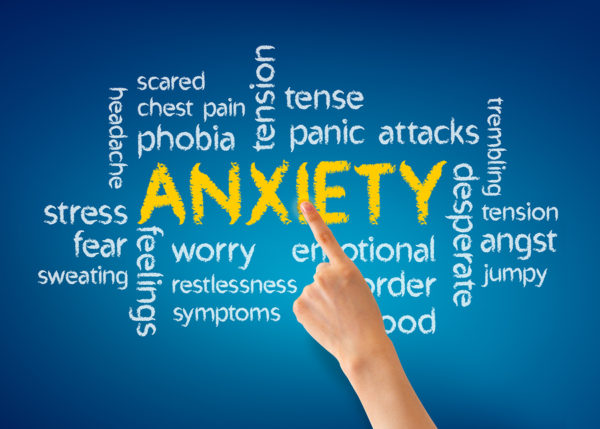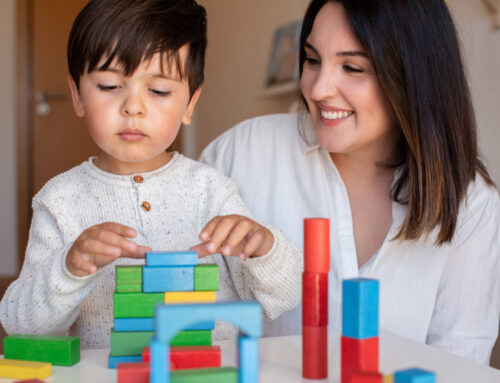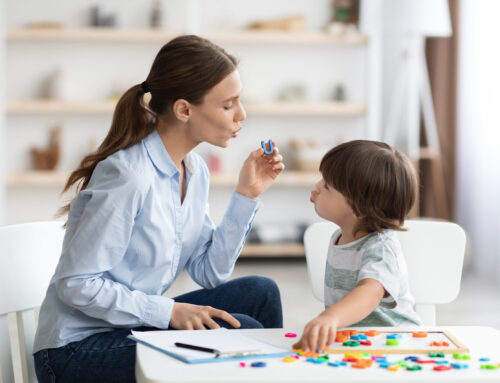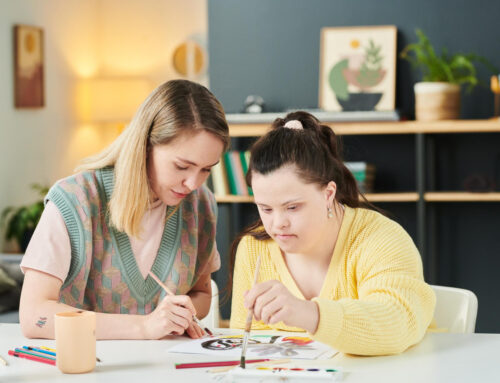
-
- Unbeknownst to many families, anxiety is not just an adult problem. Anxiety is a group of neurotic conditions that can easily affect a young child, but the symptoms look vastly different. Some of the following anxiety disorders impact adults as well as children (visit https://adaa.org/living-with-anxiety/children/childhood-anxiety-disorders regarding more descriptive information about each disorder):
- Generalized anxiety disorder (GAD)
- Obsessive Compulsive disorder (OCD)
- Selective Mutism
- Post-Traumatic Stress Disorder (PTSD)
- Social Anxiety Disorder
- Panic Disorder
Dr. Roy Boorady with the Child Mind Institute has listed some common symptoms that a child could display who has an anxiety disorder:
- Increased clinginess or avoidance behaviors around parents and caregivers
- Random or unexplained emotional outbursts or tantrums
- Trouble with sleeping at night
- Complaining about stomach problems
- Reduced attention such as seen at home or in classroom settings
Childhood anxiety can be very difficult for adults to identify to undeveloped communication skills. Young children lack the ability to verbally communicate with parents and caregivers regarding anxiety and its symptoms. Let’s take a look at the following scenario:
Trevor is a 10-year old boy who attends a private school. His parents have set is educational standards high, and he is already making plans to attend Ivy League Colleges including Harvard or Yale. Over the past month, one of his teachers has noticed a decline in Trevor’s schoolwork. Either is performance has dropped or he hasn’t turned in several assignments on time. He has trouble holding still in class and fidgets with his pencil throughout the entire period. Every once in a while, Trevor has explosive outbursts in the cafeteria towards other students. Trevor has also called his parents 5 times in the past 3 weeks to come pick him up from school because of severe stomach pains. The school psychologist assumes that Trevor has ADHD, mostly due to the fidgeting behavior in class.
Through the uneducated eye, it would be easy to assume all sorts of diagnoses for Trevor. Because anxiety manifests itself differently in children, a proper diagnosis may never be identified.
Anxiety disorders wreak havoc on a child’s ability to function. Daily activities are greatly impacted, including:
- School work or academics
- Social activities with friends and family
- Sports or extra-curricular activities
- Spare time activities of choice
- Household chores
- Basic tasks: dressing, feeding, toileting, sleeping, showering
Occupational therapy has its place when working with children with anxiety disorders because it’s a child’s overall function that is at stake. Instead of focusing on physical or cognitive problems, the OT redirects therapy to emphasize care for the child’s emotional needs. Methods include ways to reduce anxiety symptoms in order to promote functional participation in tasks that matter to the child. Some methods may include:
- Family/Caregiver Education: The OT may provide some intervention and educational techniques to parents/caregivers in order to reduce symptoms. Some may include exploring ways to reduce or change expectations that they have of their child, mellowing out the daily routine, replacing tasks with emotionally-gratifying activities, etc.
- ADL (Activities of Daily Living) Participation: The OT might encourage the child to participate in activities that are familiar to them in order to lower expectations and to reduce anxiety symptoms during therapy.
- Revamping the Child’s Goals or Expectations: Sometimes, it is not the parents pushing the child with strenuous expectations or life goals. There are times in which the child creates those goals for themselves and then breaks down when those goals aren’t met or perfected within a certain time-frame. In those cases, the OT would introduce strategies to help the child reduce those inner expectations that they have of themselves.
- Consulting with relevant disciplines: A good OT will never pretend to know more than they do, especially when it comes to topics that are well within the realm of other disciplines including psychology or psychiatry. For more complex disorders that need further explaining (i.e., OCD, PTSD), the OT may suggest consulting with a psychological professional in order to best round out the child’s therapeutic intervention.
Start early and get the help now. If your child is dealing with some unexplainable symptoms or behavioral problems that are negatively affecting their participation in daily living tasks, seek help immediately.
References
- Boorady, R. MD (2018). Why Childhood Anxiety Often Goes Undetected (and the Consequences). Child Mind Institute. https://childmind.org/article/detecting-childhood-anxiety/. Viewed on July 24, 2018.
- Unbeknownst to many families, anxiety is not just an adult problem. Anxiety is a group of neurotic conditions that can easily affect a young child, but the symptoms look vastly different. Some of the following anxiety disorders impact adults as well as children (visit https://adaa.org/living-with-anxiety/children/childhood-anxiety-disorders regarding more descriptive information about each disorder):





